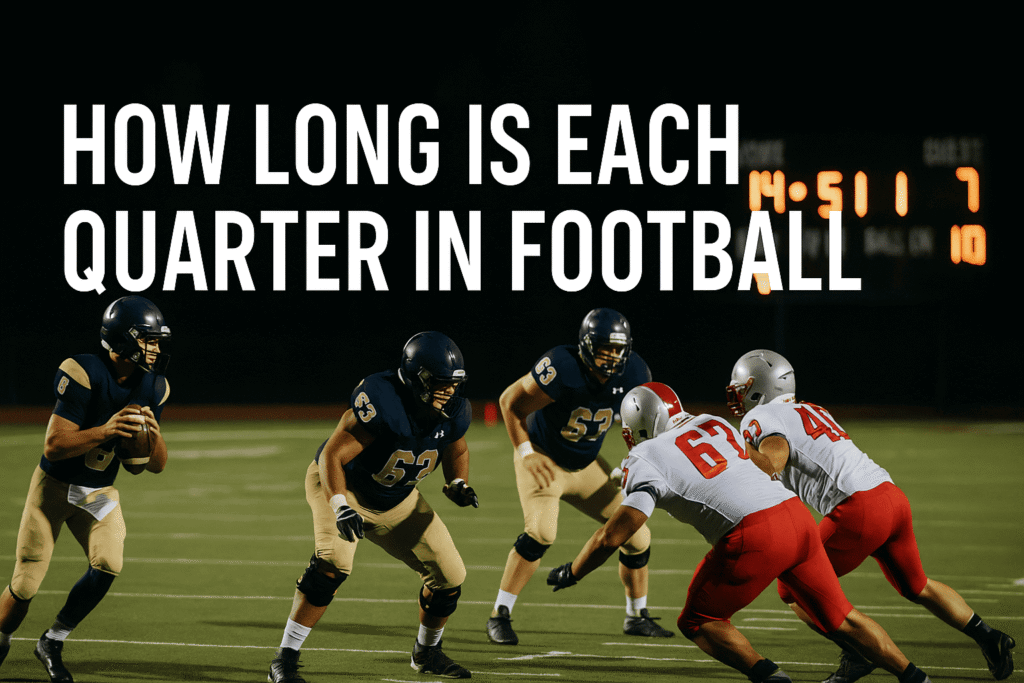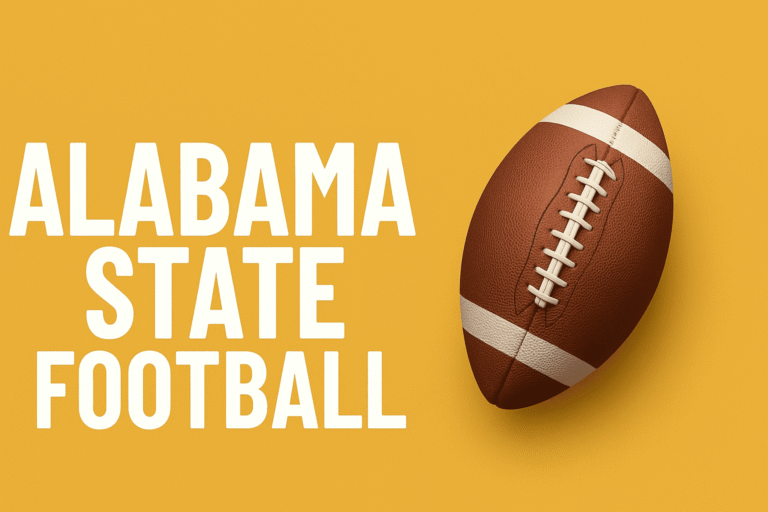How Many Quarters in Football: Understand the Game’s Structure
When you watch a football game, whether it’s the NFL, college football, or even high school, you may notice that the game is divided into sections. But How Many Quarters in Football actually make up the full game?
Fuel your passion with our exclusive Football accessories.
If you’ve ever wondered about the rules or how the structure works, you’re not alone. Let’s dive deep into this and explore the details of football’s quarters.
What Are the Quarters in Football?
In American football, the game is broken down into four quarters. Each quarter typically lasts 15 minutes in professional and college football, though the length can vary slightly for high school games. So, when someone asks, “How many quarters in football?” the answer is straightforward: four quarters.

Each quarter is an essential part of the game, and understanding their role can help you enjoy the sport even more. The game structure ensures that there’s a good balance between offense and defense, with enough time for teams to make adjustments as the game progresses.
The Structure of Each Quarter
Each quarter in football is essentially a time period in which teams compete for dominance on the field. Here’s a closer look at what happens during each one:
First Quarter: The Kickoff to the Game
The first quarter kicks off the game, and it’s typically filled with energy and excitement. Both teams are eager to set the tone. This is the time when coaches and players are feeling each other out, testing strategies, and working on getting in rhythm. If a team gets off to a strong start, it can build momentum for the rest of the game.
If you are interested in fashion and other accessories you should take a look at Black Diamond Engagement Ring: Bold, Elegant, and Timeless
Second Quarter: The Midway Mark
The second quarter is crucial for teams to assess their progress. By now, the initial excitement from the first quarter has settled, and teams are trying to establish dominance. If a team has a lead going into halftime, they might go into a more defensive strategy.
Conversely, teams that are trailing might take more risks to try to catch up. The second quarter often sets the stage for how the game will unfold.
Third Quarter: The Turnaround Point
The third quarter is significant because it follows halftime. This break gives coaches a chance to adjust strategies and tweak the game plan based on what happened in the first half. The team that comes out strong after halftime often has the upper hand.
Coaches and players both understand that making adjustments at this stage can determine whether a team wins or loses.
Fourth Quarter: The Final Push
The fourth quarter is where the game’s outcome is decided. If the game is close, you’ll see players giving their all. This is the time when every play, every yard, and every decision matters. The final moments can be filled with tension as teams work toward securing the win.
Whether it’s a last-minute touchdown or a crucial defensive stop, the fourth quarter often delivers the most dramatic moments.
What Happens During the Breaks Between Quarters?
Between each quarter, there is a short break. These breaks are important because they give players a chance to rest, receive coaching, and refocus. At the end of the first and third quarters, there is a brief intermission where the teams switch sides of the field.
This is typically a one-minute break, but it can vary depending on the level of play.
How Many Quarters in Football: Why Four?
The division of football into four quarters has been a staple of the game for over a century. The structure provides a balance between endurance, strategy, and excitement. By breaking the game into four quarters, teams have opportunities to adjust their approach at regular intervals.
This format also ensures that fans stay engaged throughout the game, as each quarter presents fresh challenges and opportunities.
The Impact of Quarters on Strategy
The fact that a football game is divided into four quarters has a significant impact on how teams approach the game. Coaches will often use the first quarter to test their opponents’ weaknesses, and by the second quarter, they’ll implement strategies to exploit those weaknesses.
Halftime offers the opportunity for further strategy adjustments, especially since the third and fourth quarters typically decide the game’s outcome.

Your one-stop destination for rings, e-bikes, cars & all things sporty — Explore now at Ridenplay.online!
Teams that are trailing may use the fourth quarter to go all in, risking it all for a comeback. Conversely, teams with a lead might slow the pace to run down the clock and secure the win.
Quarters and Overtime
Sometimes, a game doesn’t end after four quarters. If the score is tied at the end of the fourth quarter, the game may go into overtime. In most professional and college football games, overtime rules are in place to ensure that one team emerges victorious.
In overtime, the game continues until one team scores and wins, ensuring that the outcome is clear.
Why Are Quarters Important in Football?
Understanding how many quarters in football exist is key to appreciating the game. The division into quarters allows for better pacing, strategic adjustments, and provides teams with the opportunity to come back from behind.
Whether you’re a seasoned fan or new to the sport, knowing the role of each quarter enhances the football experience.
As a fan, paying attention to the strategies and performances of teams in each quarter makes watching the game much more enjoyable. Whether it’s the excitement of the first quarter, the adjustments made in the second, the intensity of the third, or the final push in the fourth, each quarter tells a unique story.
Conclusion
Understanding how long each quarter is in football helps fans, players, and even casual viewers better appreciate the game’s pace and structure. Whether you’re watching the NFL, college football, or high school games, knowing that each quarter typically lasts 15 minutes—with real-time stretching due to timeouts, halftime breaks, and replays—adds clarity to the viewing experience.





